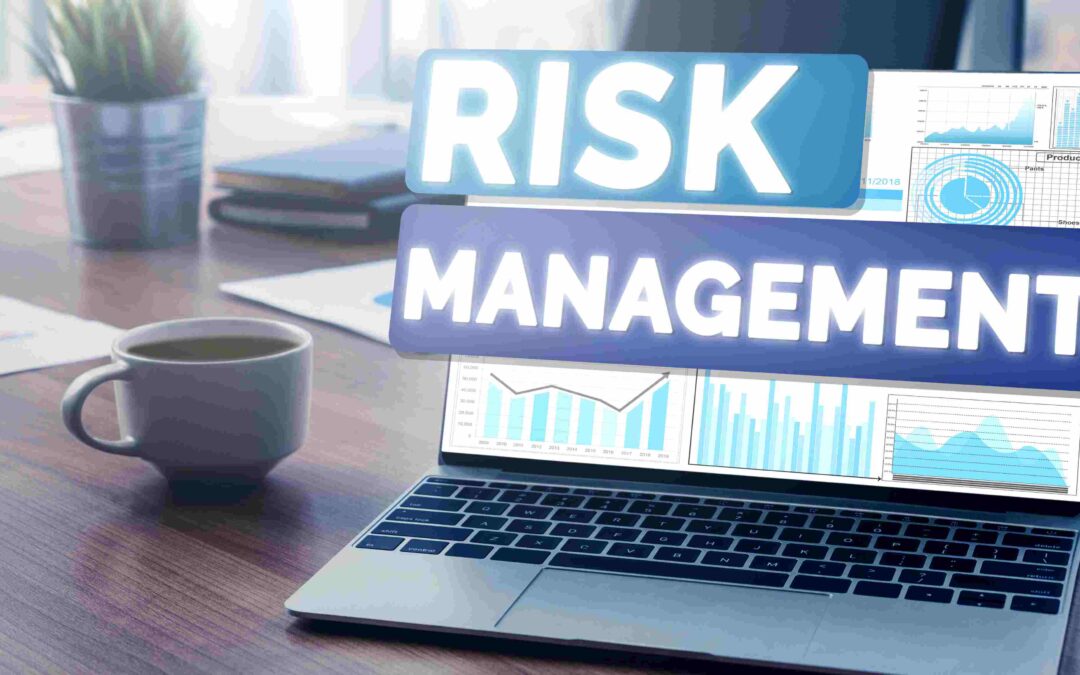Winning the Leading Light Award The Real Secrets to Driving for Work Safety.
What You Really Need to Know
Unlocking Excellence in Road Safety Management
Every year, the Road Safety Authority (RSA) shines a spotlight on the individuals, communities, and organisations making a real difference on our roads with their ‘Leading Lights in Road Safety’ awards. With nominations for the 2025 awards now open, it is a perfect time to celebrate these champions. But for every Irish business, it should also be a moment for serious reflection.
While we applaud the nominees, the ‘Leading Lights’ initiative serves as a powerful annual reminder of a critical, and often overlooked, area of workplace health and safety: ‘Driving for Work’. It prompts a vital question for every manager, director, and safety officer: Is our organisation a true ‘Leading Light’ when it comes to protecting our employees on the road?
This article will use the spirit of the RSA awards to explore what best practice in ‘Driving for Work’ safety really looks like. We will delve into your legal obligations, outline the components of a world-class safety programme, and explain how a formal management system is the ultimate mark of a true leader in road safety.
The Legal Reality Driving for Work is Work
It is a common misconception that an employer’s health and safety responsibilities end at the workplace gate. Under Irish law, this is fundamentally incorrect. The Safety, Health and Welfare at Work Act 2005 is clear: employers have a duty of care to ensure the safety of their employees in any location where work is being carried out. When an employee is on the road for business purposes, their vehicle is considered a place of work.
This applies not only to professional HGV drivers or sales reps in company cars but to any employee driving for work. This includes:
- An office administrator using their own car to go to the bank or post office.
- A technician driving between client sites.
- A manager travelling to a meeting in another county.
According to the Health and Safety Authority (HSA), managing the risks associated with driving for work is a legal requirement, just like managing the risks of machinery or hazardous substances in a factory. A failure to do so can have devastating human consequences and severe legal and financial repercussions for the business.
The Makings of a ‘Leading Light’ Business
So, what separates a business that is merely compliant from one that is a genuine leader in road safety? It is a holistic, proactive culture that is embedded in the organisation from the top down. Here are the core components.
1. A Rock-Solid ‘Driving for Work’ Policy
This is the foundation. A comprehensive, written policy is non-negotiable. It is a living document that sets out the company’s commitment and clear rules for everyone. A best-in-class policy will always include:
- Clear Responsibilities: Who is responsible for what, from senior management down to the individual driver.
- Driver Fitness & Health: Clear guidelines on fatigue, medication, alcohol and drugs, and the importance of eyesight tests.
- Journey Planning: Procedures for assessing the need for travel and planning routes to avoid hazards and build in adequate rest breaks.
- Mobile Phone Usage: A strict, unambiguous policy that goes beyond the letter of the law, often banning even hands-free use while the vehicle is in motion.
- The ‘Grey Fleet’: Specific rules for employees who use their own vehicles for work, including requirements for insurance, NCT, and vehicle maintenance.
2. Proactive Vehicle Safety & Management
A ‘Leading Light’ organisation knows that a valid NCT is the bare legal minimum, not the goal. Their vehicle management programme is far more rigorous.
- Regular Checks: Implementing a system of mandatory, driver-led daily walk-around checks before a vehicle is used.
- Scheduled Maintenance: A strict, preventative maintenance schedule that adheres to or exceeds manufacturer recommendations.
- Safety Features: Prioritising the procurement of vehicles with high Euro NCAP safety ratings and modern safety features like Autonomous Emergency Braking (AEB).
3. Continuous Driver Training & Wellbeing
Holding a valid driving licence is the starting point, not the full extent of a driver’s competence. Leading businesses invest in their drivers.
- Advanced Training: Providing periodic training in areas like defensive driving, eco-driving, or specialised training for operating specific vehicles.
- Fatigue Management: Actively managing work schedules to prevent driver fatigue, a factor in as many as 1 in 5 driver deaths in Ireland, according to the RSA.
- Supporting Driver Health: Creating a culture where drivers feel able to report health issues or stress that could affect their ability to drive safely, without fear of penalty.
ISO 39001 The Gold Standard for Road Safety Leaders
While a strong policy and good practices are essential, the ultimate commitment to road safety is demonstrated through the implementation of a formal Road Traffic Safety (RTS) Management System. The internationally recognised standard for this is ISO 39001.
ISO 39001 provides a strategic framework for an organisation to analyse, control, and improve its road safety performance. It uses the same ‘Plan-Do-Check-Act’ methodology as other major ISO standards, helping you to:
- Establish a clear RTS policy and objectives.
- Systematically identify risks and opportunities related to road traffic safety.
- Implement programmes to achieve your safety targets.
- Monitor and measure your performance.
- Continually improve your system to reduce death and serious injury on the road.
Achieving this standard, a process overseen in Ireland by the National Standards Authority of Ireland (NSAI), is a powerful statement. It tells your staff, your clients, and your community that you are a true ‘Leading Light’ in every sense of the word.
Nominate a Champion, and Become One Yourself
-
The RSA’s ‘Leading Lights’ awards are a fantastic opportunity to recognise the unsung heroes of road safety in your business or community. We strongly encourage you to think about who you could nominate before the deadline.
Authoritative Link: You can find all the details and submit your nomination on the RSA’s ‘Leading Lights’ announcement page.
More importantly, let this be the catalyst for your own organisation’s journey. Use this moment to review your ‘Driving for Work’ policies and ask: “Are we doing enough? Could we be a ‘Leading Light’?”
Let Acornstar Guide Your Journey to Road Safety Excellence
- Managing ‘Driving for Work’ is a complex but non-negotiable part of your overall health and safety obligations. From developing a robust policy to implementing a world-class management system like ISO 39001, a structured approach is essential.If you are ready to move beyond basic compliance and transform your organisation into a leader in road traffic safety, contact the expert team at Acornstar for a no-obligation consultation.

Stop Throwing Profits in the Brown Bin Managing Food Waste During the Festive Rush
Stop Throwing Profits in the Brown Bin What You Really Need to Know Managing Food Waste During the Festive Rush Look in your brown bin right now. Go on, have a proper look. See that bag of wilted salad leaves? That’s €15 you’ll never see again. Those...

The Winter Vomiting Bug Protecting Your Kitchen This Christmas
The Winter Vomiting Bug Protecting Your Kitchen This Christmas What You Really Need to Know Reduce the risk of this viral villain wreaking havoc in your kitchen. The festive season should be a time of celebration, packed dining rooms, and satisfied customers. But for...

Turkey Shortage 2025 Why Your Christmas Menu Needs a Plan B (And How to Keep It Safe)
Turkey Shortage 2025 Why Your Christmas Menu Needs a Plan B What You Really Need to Know Genuine logistical challenge You’ve likely heard the whispers or seen the headlines about the new restriction zones in Monaghan and Cavan. Perhaps you’ve scrolled past...

How to Conduct an Effective Risk Assessment in Irish Workplaces
How to Conduct an Effective Risk Assessment A Step-by-Step Guide for Irish Employers What You Really Need to Know Introduction Risk assessment forms the cornerstone of effective workplace safety management, serving as the systematic foundation upon which all other...

Creating a Positive Safety Culture in Your Organisation
Creating a Positive Safety Culture in Your Organisation What You Really Need to Know Introduction “It’s just the way we do things around here.” This simple phrase captures the essence of organisational culture the unwritten rules, shared beliefs, and...

Wellbeing at Work Combatting Stress and Mental Health Risks in Irish Workplaces
Wellbeing at Work Tackling Stress and Mental Health in Irish Workplaces What You Really Need to Know Introduction Mental health has moved from the margins of workplace discourse to the centre of business strategy and for good reason. In boardrooms across Ireland,...

The Future of AI and Robotics in Workplace Safety
The Future of AI and Robotics in Workplace Safety What You Really Need to Know Introduction The integration of artificial intelligence and robotics into workplace safety management represents one of the most significant technological shifts facing Irish businesses...

Manual Handling Mistakes How to Prevent Musculoskeletal Injuries
Manual Handling Mistakes How to Prevent Musculoskeletal Injuries What You Really Need to Know Introduction Manual handling injuries represent one of the most significant workplace health challenges facing Irish businesses today, with musculoskeletal disorders (MSDs)...

7 Workers Injured Daily Why Winter Safety
7 Workers Injured Daily. Why Winter Safety Planning Can't Wait What You Really Need to Know Introduction The days are getting shorter, the mornings are darker, and there’s a crisp chill in the air that signals winter’s approach. For many of us, this...

The 3 Biggest Topics in HSEQ Right Now Takeaways from Europe’s Top Safety Summits
The 3 Biggest Topics in HSEQ Right Now Takeaways from Europe's Top Safety Summits What You Really Need to Know Introduction From October 23-24, 2025, hundreds of HSEQ professionals gathered in Berlin for the HSE360° Summit, one of Europe’s premier health,...






